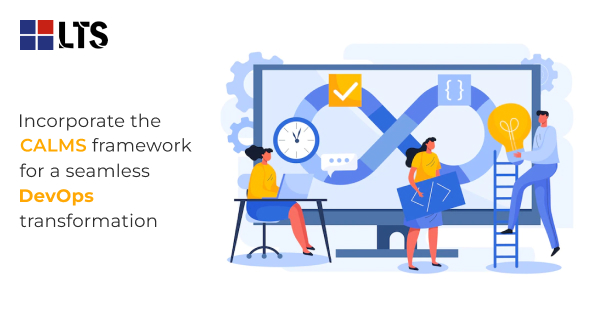Incorporate the CALMS Framework for a Seamless DevOps Transformation
The work of DevOps developers needs to know. DevOps has become the standard approach to managing code flow across development and operation teams. But monitoring a shift to DevOps from models such as waterfall development can be a hit and a miss, and even when the IT team takes steps to track progress, the business itself is excluded. DevOps Developers employ processes, tools, and methods to balance requirements across the development cycle, from coding and deployment to maintenance and updates.

DevOps software combines software developers (dev) and operations (ops).
What are the Benefits of Custom Software Development?
The main reason for developing Custom Software Development is that your company desires to own a solution. Companies can change software features, data, development methods, and more with customized bespoke software. Businesses can make changes anytime they want, add vital information and implement feedback from the end-user.
Culture, Automation, Lean, Measurement, Sharing (CALMS) Framework –
The CALM framework assesses whether enterprises are ready to adopt DevOps processes or how companies progress in their DevOps transformation. It is constructed on the following pillars –
- Culture. Before you break down silos, you need a culture of shared responsibility, or at least a group of people committed to establishing that culture bottom-up in some way, with management approval and support.
- Automation. Similar to the technical practices surrounding continuous delivery above, teams undergoing DevOps transformation should focus on automating as many manual tasks as possible, especially constant integration and test automation.
- Learn. Development teams use lean principles to eliminate waste and optimize value streams, such as minimizing WIP, increasing work visibility, and reducing handoff complexity and wait times.
- Measurement. Organizations are dedicated to collecting data on processes, deployments, etc., to understand current capabilities and where you can make improvements.
- Parts. A culture of openness and sharing within and across teams (enabled by the right tools) keeps everyone working toward the same goals and reduces friction from handing over when things go wrong.
So What do these Frameworks Have in Common for The work of DevOps developers?
You may have noticed some recurring themes and common elements as you go through the various frameworks in this article. In this section, I would like to identify three essential practices that can help foster a virtuous cycle. A virtuous circle is a positive outcome that continues to be amplified and enhanced as DevOps evolves within an organization. These three high-level concepts encompass many of the principles detailed above and, when approached in sequence, gradually gain momentum in a continuous virtuous circle.
These are the 3C’s: – Culture – Collaboration – Continuous Improvement
Culture
Again, culture is a broad term that means different things to different people. But what is DevOps? It’s one of the fundamental aspects of DevOps, and you must build other technical and management practices to succeed.
As Accelerate’s contributors discuss, the cultural typology of Ron Westrum’s organization ranges from pathological (power-oriented) to bureaucratic (rule-oriented) to generative (achievement-oriented). A productive culture fosters bridges between teams, risks are shared, and failures lead to investigation rather than blame. Giving yourself time to work towards these cultural paradigm shifts and establish yourself through practice is an essential first step.
1. Collaboration
It lays the groundwork for a generative culture (a culture where everyone feels safe enough to “pull themselves out,” experiment, admit their mistakes, and try again without fear of punishment or shame). This can unlock greater collaboration within and between teams.
Empowered employees are open to sharing and receiving feedback; the more these behaviors are observed, the more others on the team will imitate similar behaviors. Overall performance and shared goals take precedence over protecting yourself and your silos.
2. Continuous Improvement
Finally, continuous improvement starts naturally when teams work well together, and everyone takes personal responsibility for their performance. This is also where leadership can continue to foster a culture of learning. To keep the momentum of this virtuous circle going, it’s essential to take time outside of your everyday professional responsibilities to focus on personal and organizational improvement.
Conclusion –
There is no cloud native without DevOps, but setting up technical DevOps enablers is not enough. Moving to the cloud requires changing his DevOps culture across the enterprise, putting automation, measurement, and sharing at the heart of leaders and employees. Shaping a culture that meets cloud DevOps and native needs is a long process that requires an environment where trust and production are organized. A CALMS framework can help you navigate the shifts in your DevOps culture by focusing on what’s right and not facing a rigid culture.
For more details on devops, click here https://en.wikipedia.org/wiki/DevOps.
CALMS is a framework that assesses the company’s ability to adopt DevOps processes, as well as a way of measuring success during a DevOps transition.
Change lead time. One of the key DevOps metrics to track changes is lead time.
Change theerror rate. The change failure rate is the percentage of code changes that require hotfixes or other post-production fixes.
Frequency of use.
Mean time to recovery
Successful DevOps transformation needs collaboration, communication, and continuous effort.
